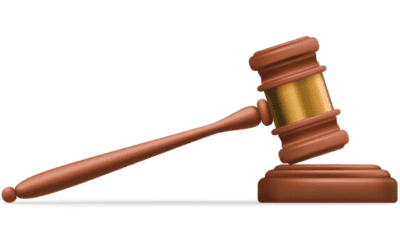In the ever-evolving realm of innovation and ingenuity, the preservation of intellectual property rights (IPR) holds utmost significance in cultivating an environment conducive to the advancement of ideas and guaranteeing equitable rivalry.
Bangladesh, being a burgeoning center of economic activity, duly acknowledges the paramount significance of upholding the enforcement of intellectual property rights in order to foster innovation and facilitate economic expansion.
The present article undertakes a comprehensive analysis of the procedural intricacies, formidable obstacles, and the intricate legal structure pertaining to the enforcement of intellectual property rights within the jurisdiction of Bangladesh.
Legal framework
A.Patents and Designs Act, 1911
Patent Protection: The legal foundation for patent protection in Bangladesh is established by the Patents and Designs Act of 1911. The aforementioned text delineates the requisite conditions for patentability, elucidates the entitlements bestowed by patents, and expounds upon the protocols governing the acquisition and enforcement of patents.
Design Protection: In addition to patents, it is important to note that the legal system also addresses the safeguarding of industrial designs, thereby establishing a comprehensive framework to ensure the protection of the visual elements associated with various products.
B. Copyright Act, 2000
Scope of Protection: The aforementioned matter at hand pertains to the legal framework established by the Copyright Act of 2000, which serves as the governing statute for the safeguarding and preservation of literary, artistic, and musical works. The aforementioned statement delineates the entitlements bestowed upon authors and creators, encompassing the privileges pertaining to the replication, dissemination, and public exhibition of their works.
Duration of Copyright: The legal framework establishes the temporal extent of copyright safeguarding and guarantees that creators are afforded sole entitlements to their intellectual creations for a designated duration.
C. Trademark Act, 2009
Trademark Registration: The aforementioned statement asserts that the registration and safeguarding of trademarks in Bangladesh are regulated by the Trademark Act of 2009. The aforementioned provision delineates the requisite protocol for the registration of trademarks and furnishes appropriate recourse in instances of infringement.
Distinctiveness and Infringement: The aforementioned Act places significant emphasis on the paramountcy of trademark distinctiveness and expounds upon the legal recourse that is at the disposal of trademark proprietors in the event of infringement.
D. Geographical Indications of Goods (Registration and Protection) Act, 2013
Geographical Indications: The aforementioned legislation serves to safeguard geographical indications of merchandise and to prohibit the unpermitted utilization thereof, which has the potential to deceive consumers with regards to the source or attributes of said merchandise.
Registration Process: The aforementioned Act duly establishes a meticulously designed and legally binding registration process for the purpose of safeguarding and preserving the distinctive attributes of products, intrinsically linked to a specific geographical region, thereby affording manufacturers the opportunity to assert their rightful claim over said characteristics.
Enforcement Mechanism
A. Intellectual Property Rights Court
Specialized Courts: In the jurisdiction of Bangladesh, there exists a specialized court known as the Intellectual Property Rights Court, which is duly authorized to preside over and resolve legal disputes pertaining to patents, trademarks, and copyrights.
Speedy Resolution: Arbitration tribunals, in their intended capacity, serve the purpose of expeditiously and expertly resolving disputes pertaining to intellectual property, thereby making a valuable contribution to the enforcement process.
B. Customs Procedures
Customs registration: Rights holders have the ability to engage in the registration of their intellectual property with the appropriate customs authorities. This mechanism facilitates the interception of counterfeit products at designated entry points, effectively mitigating their proliferation within the market.
Border Patrol: The customs officers possess the legal authority to apprehend and seize merchandise that is reasonably believed to be in violation of intellectual property rights, thereby exemplifying a proactive stance towards enforcement.
Enforcement Challenges
A. Lack of awareness
Public Awareness: The prevailing challenge at hand pertains to the limited extent of public awareness regarding the utmost significance of intellectual property rights. It is imperative to undertake diligent endeavors aimed at disseminating comprehensive knowledge to both corporate entities and the general populace regarding the inherent significance of upholding and safeguarding the rights pertaining to intellectual property.
Enforcement Capacity: The enhancement of law enforcement agencies’ capacity to handle intellectual property cases is of utmost importance in order to ensure the efficacy of enforcement measures.
B. Counterfeiting and Piracy
Market Challenges: The pervasive issues of counterfeit products and piracy continue to pose significant challenges that have a detrimental impact on numerous industries within the jurisdiction of Bangladesh. It is imperative that heightened enforcement measures be implemented in order to effectively suppress and mitigate this particular practice.
Cross-border issues: The inherent global scope of counterfeiting necessitates the imperative of international cooperation and collaboration in order to adequately confront and surmount the multifaceted obstacles that arise across national boundaries.
Future directions and recommendations

A. Technological advances
Digital Safeguards: In light of the emergence of digital technologies, it is imperative to incorporate robust digital safeguards in order to safeguard intellectual property within the digital realm.
Blockchain Applications: The examination of blockchain applications for the purpose of registering and safeguarding intellectual property has the potential to enhance transparency and mitigate the likelihood of deceitful conduct.
B. International Cooperation
Cooperation Efforts: The enhancement of collaborative efforts with international organizations and neighboring countries has the potential to facilitate the seamless exchange of vital information and resources, thereby fostering a more efficient and successful implementation process.
Harmonization of laws: The harmonization of intellectual property laws with internationally recognized standards serves to foster uniformity and streamline the process of enforcing legal measures across national boundaries.
Conclusion
In essence, the imperative lies in the enforcement of intellectual property rights within the jurisdiction of Bangladesh, as it serves as a pivotal catalyst for the cultivation of innovation, ingenuity, and the safeguarding of the entitlements bestowed upon creators and pioneers.
The extant legal framework and enforcement mechanisms, in conjunction with proactive measures and international cooperation, serve to bolster the nation’s persistent endeavors in establishing a robust intellectual property milieu.


